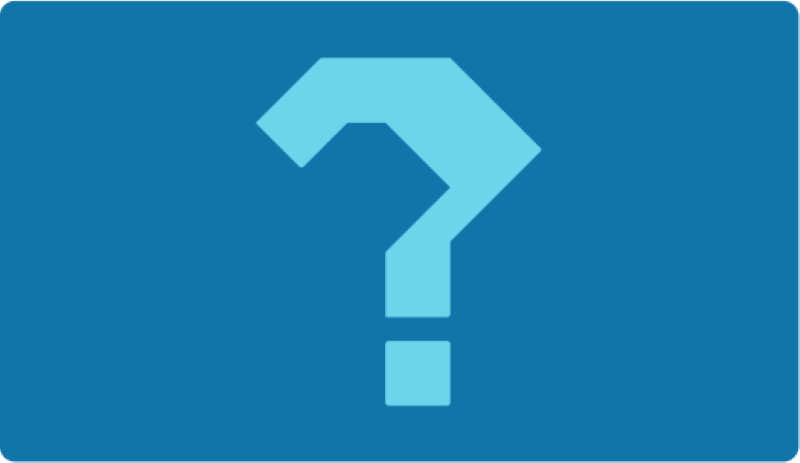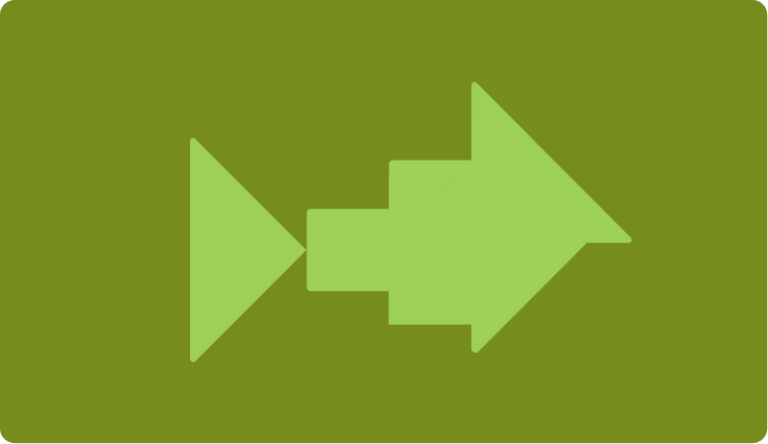
Both differentiation and universal learning design (UDL) aim to provide your students personalised learning, however because they have the same goal and similar practices, it can make choosing the right strategy for you challenging.
But with a strong foundational understanding of differentiation and UDL, the differences become less nuanced, and it’s easier to choose the right strategy for you.
This guide breaks down the essentials of each approach, providing you with insights to determine which aligns best with your teaching goals and the needs of your students.
Understanding Differentiation
Key Concepts of Differentiation
Differentiation customises teaching to meet the diverse needs of individual students. It acknowledges students’ varying backgrounds, readiness levels, interests, and learning profiles.
Key concepts include:
-
Content differentiation: Multiple avenues of learning material, such as text, videos, or hands-on activities.
-
Process differentiation: Different methods and activities, like group work, independent study, or peer tutoring.
-
Product differentiation: Various ways to demonstrate understanding, such as essays, presentations, or creative projects.
By focusing on these concepts, you can create a responsive learning environment, encouraging every students to reach their full potential.
Benefits of Differentiated Learning
Differentiated learning offers several benefits, significantly enhancing each student’s educational experiences. It caters to individual learning styles, increasing student engagement and motivation. When students feel recognised, they’re more likely to participate actively.
This approach can close achievement gaps by providing tailored support to those who struggle in traditional settings. Personalised instruction addresses specific challenges, helping students build confidence.
A differentiated classroom supports everyone, allowing each student to progress at their own pace, fostering critical thinking and problem-solving skills.
Challenges in Differentiation
Differentiation presents obstacles to overcome. One major challenge is the time and effort required to plan and implement individualised instruction.
You must assess each student’s needs and learning styles, which is challenging in classrooms with wide-ranging abilities. Creating multiple lesson plans and activities can be overwhelming, requiring deep curriculum understanding and creative adaptation.
Some students may resist moving away from traditional methods. Encourage your students to take ownership of their learning, a gradual process. Differentiation requires ongoing assessment and flexibility, adapting as students’ needs evolve.
Exploring Universal Design for Learning
Key Concepts of UDL
Universal Design for Learning (UDL) optimises teaching and learning for everyone. It involves proactively designing experiences to accommodate a wide range of learners.
UDL is built around three principles:
-
Multiple means of engagement to stimulate interests and motivation through different task completion choices.
-
Multiple means of representation by presenting content in formats like visual aids, auditory materials, or interactive models.
-
Multiple means of action and expression allowing students various ways to demonstrate learning, such as through writing, speaking, or projects.
By integrating these principles, you strive to create a learning environment that supports all students.
Benefits of UDL
UDL is attractive for fostering inclusive classrooms with its focus on accessibility and flexibility. Designing inherently adaptable experiences minimises the need for later modifications, saving time and resources.
By offering access choices, UDL empowers students to control their educational journey. This can boost motivation and deepen connection to material. UDL supports a wide range of learners, including those with disabilities, ensuring equal success opportunities.
Encouraging varied expression and communication helps students develop versatile skills valuable beyond the classroom.
Challenges of UDL
Implementing UDL poses challenges too. Upfront effort is needed to design lessons that meet UDL principles, requiring time to understand individual needs and create diverse materials.
Transitioning to UDL may demand significant teaching and curriculum design changes, needing development and support. Not all schools have tools or funding for UDL’s diverse materials and technology.
Measuring UDL effectiveness is challenging due to individualised learning experiences. Continuous assessment and adaptation are essential to ensure all students benefit.
Comparing Differentiation and UDL
Similarities and Differences
UDL is a Proactive Design: UDL focuses on designing the learning environment and materials from the start to be accessible and effective for all learners. It emphasises removing barriers before they arise.
Differentiation is a Reactive Approach: Differentiation involves adapting instruction after assessing the needs of specific learners or groups. The teacher adjusts content, process, product, or learning environment for individuals or small groups.
Contexts for Each Approach
The effectiveness of Differentiation and UDL depends on classroom dynamics and goals. Differentiation suits environments with identified specific needs, allowing tailored instruction for particular requirements.
Conversely, UDL benefits settings aiming for broad, inclusive approaches from the start, ideal for creating universally accessible curricula and minimising barriers. Both approaches can coexist, but understanding your educational setting’s context and goals helps determine whether Differentiation, UDL, or a blend suits your students’ needs.
Evaluating Effectiveness
To evaluate the effectiveness of Differentiation, focus on individual student progress and achievement
Monitor if tailored instructional strategies enhance understanding and performance, particularly for students needing additional support. Measurements should include individual assessments, observing improvements in targeted areas, and receiving feedback from students to ensure strategies meet their educational needs.
To evaluate the effectiveness of UDL, focus on inclusivity and accessibility
Ensure that students of all abilities engage equally by employing varied methods. Evaluate success by assessing how well the educational environment accommodates diverse learners without requiring individual adjustments. Use surveys and feedback to gather insights into overall engagement and satisfaction, and adapt practices as needed to maintain an inclusive atmosphere.
Choosing the Right Method
UDL is Best for You If…
-
Universal Design for Learning (UDL) is ideal for classrooms that need a broad, inclusive approach.
-
Suitable for environments with diverse student backgrounds, abilities, and learning styles.
-
Facilitates the creation of flexible learning experiences that accommodate everyone.
-
Reduces the need for later adjustments, making it perfect for teaching goals focused on fostering inclusivity and accessibility from the outset.
-
Consider availability of resources and support, like accessible materials and technology, as UDL thrives on upfront investment in these areas.
-
If your goal is to establish a universally accessible educational environment that anticipates diverse needs, UDL is the recommended choice.
Differentiation is Best for You If…
-
Differentiated learning is ideal for classrooms needing significant individualised support.
-
If you’re in a teaching setting with diverse abilities and learning needs, differentiation enables tailored instruction and resources to accommodate those variations.
-
This method benefits environments where bespoke strategies are necessary to address distinct student profiles.
-
While requiring more planning and resources, differentiation allows for the adaptation of content, processes, and products to suit specific student needs.
-
If your teaching objectives focus on personalised instruction and targeted outcomes, differentiation could be the optimal choice for your students’ educational experiences.
-
Consider your available resources, including professional development and support, for a successful implementation.
Best Practices for Implementation
Effective implementation of Differentiation or UDL requires thoughtful planning. For Differentiation, assess individual needs and preferences, developing flexible lesson plans with various content, process, and product options.
Collaboration with colleagues for strategy sharing enhances differentiated instruction. For UDL, design your curriculum with flexibility, incorporating engagement, representation, and expression means to accommodate diverse learners from the start. Use education technology and accessible resources to ensure full participation.
Continuous student feedback soliciting is vital for refining methods, ensuring the chosen approach supports their learning journey. Regular reflection and collaboration promote a dynamic educational environment.
Practical Application Strategies
Integrating Differentiation Techniques
Integrating Differentiation techniques requires a strategic approach. Start by assessing students’ readiness, interests, and learning profiles through observations and assessments.
Design flexible lesson plans with diverse content delivery options, like visual aids, hands-on activities, or interactive discussions. Use varied instructional strategies such as cooperative learning, independent learning projects, or tiered assignments to engage different learning preferences.
Provide multiple assessment options to demonstrate understanding through essays, presentations, or creative projects. Maintain open communication, encouraging students to express preferences and provide feedback. Collaborate with fellow educators for shared insights and resources for effective differentiation.
Implementing UDL in the Classroom
Implementing UDL involves planning lessons to accommodate diverse needs from the outset. Identify barriers in your curriculum, redesigning elements to be more inclusive.
Use multiple representation means, incorporating media formats like videos, text, and interactive activities. Engage students by offering participation choices through group work, independent study, or technology-based activities. Provide multiple expression means, allowing students different ways to demonstrate understanding.
Regularly assess UDL strategies’ effectiveness through feedback and performance data, refining your approach continually. Collaboration and ongoing development support successful UDL implementation for dynamic, inclusive learning environments.
Monitoring and Adjusting Methods
Monitoring and adjusting teaching methods is crucial for Differentiation and UDL. Establish clear, measurable learning objectives to track progress. Use formative assessments like quizzes, discussions, and observations for insights into understanding and engagement.
Encourage student feedback on strategies, giving them a voice in their learning process, essential for identifying methods that will resonate and any required adjustments. Regular practice reflection involves analysing data to identify what’s working and what needs modification.
Collaborate with colleagues to share insights and solutions, fostering improvement. Flexibility and openness ensure strategies meet diverse learner needs, creating an adaptive educational environment.
Taking the first steps to differentiation and UDL in your class
Whether you’re looking to start differentiation or UDL – or even a mix of both – you need resources. Education Perfect covers mathematics, English, languages, science and more, with tools that allow you to differentiate AND provide universal learning experiences.
To see how it can work for you and your students, book a time with us!




